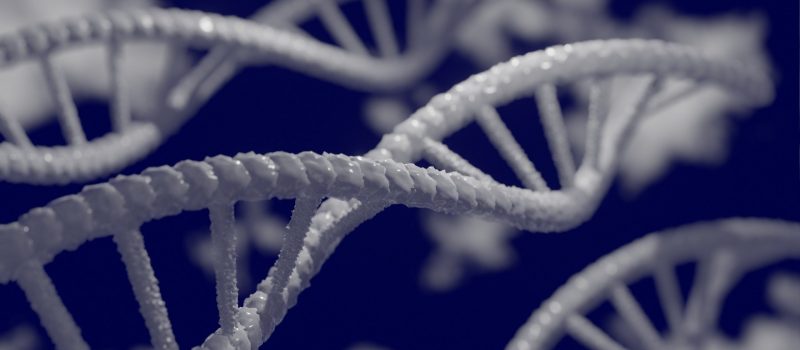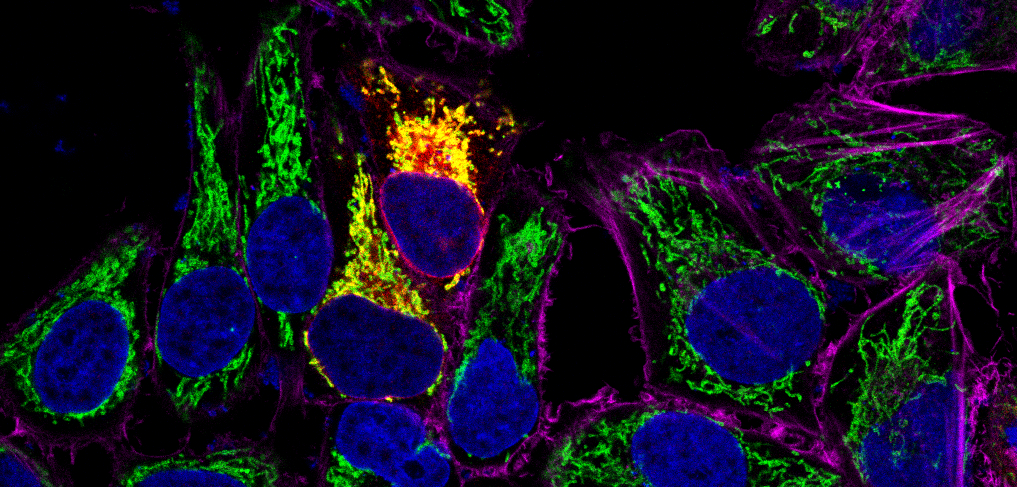I2BC publishes 200-250
articles and reviews a year
Institute for Integrative Biology of the Cell
Publications
Publications / year
0
different journals
0
fields
0
Publications / year
0
different journals
0
fields
0
![]() Latest Publications
Latest Publications
3888256
i2bc
1
chicago-author-date
10
date
desc
year
4613
https://www.i2bc.paris-saclay.fr/wp-content/plugins/zotpress/
%7B%22status%22%3A%22success%22%2C%22updateneeded%22%3Afalse%2C%22instance%22%3Afalse%2C%22meta%22%3A%7B%22request_last%22%3A0%2C%22request_next%22%3A0%2C%22used_cache%22%3Atrue%7D%2C%22data%22%3A%5B%7B%22key%22%3A%22ETW55ERX%22%2C%22library%22%3A%7B%22id%22%3A3888256%7D%2C%22meta%22%3A%7B%22creatorSummary%22%3A%22M%5Cu00fcnz%20et%20al.%22%2C%22parsedDate%22%3A%222025-12-31%22%2C%22numChildren%22%3A1%7D%2C%22bib%22%3A%22%26lt%3Bdiv%20class%3D%26quot%3Bcsl-bib-body%26quot%3B%20style%3D%26quot%3Bline-height%3A%201.35%3B%20padding-left%3A%201em%3B%20text-indent%3A-1em%3B%26quot%3B%26gt%3B%5Cn%20%20%26lt%3Bdiv%20class%3D%26quot%3Bcsl-entry%26quot%3B%26gt%3BM%26%23xFC%3Bnz%2C%20Christian%2C%20Grant%20R.%20Campbell%2C%20Audrey%20Esclatine%2C%20et%20al.%202025.%20%26%23x201C%3BAutophagy%20Machinery%20as%20Exploited%20by%20Viruses.%26%23x201D%3B%20%26lt%3Bi%26gt%3BAutophagy%20Reports%26lt%3B%5C%2Fi%26gt%3B%204%20%281%29%3A%2027694127.2025.2464986.%20%26lt%3Ba%20class%3D%26%23039%3Bzp-DOIURL%26%23039%3B%20href%3D%26%23039%3Bhttps%3A%5C%2F%5C%2Fdoi.org%5C%2F10.1080%5C%2F27694127.2025.2464986%26%23039%3B%26gt%3Bhttps%3A%5C%2F%5C%2Fdoi.org%5C%2F10.1080%5C%2F27694127.2025.2464986%26lt%3B%5C%2Fa%26gt%3B.%26lt%3B%5C%2Fdiv%26gt%3B%5Cn%26lt%3B%5C%2Fdiv%26gt%3B%22%2C%22data%22%3A%7B%22itemType%22%3A%22journalArticle%22%2C%22title%22%3A%22Autophagy%20machinery%20as%20exploited%20by%20viruses%22%2C%22creators%22%3A%5B%7B%22creatorType%22%3A%22author%22%2C%22firstName%22%3A%22Christian%22%2C%22lastName%22%3A%22M%5Cu00fcnz%22%7D%2C%7B%22creatorType%22%3A%22author%22%2C%22firstName%22%3A%22Grant%20R.%22%2C%22lastName%22%3A%22Campbell%22%7D%2C%7B%22creatorType%22%3A%22author%22%2C%22firstName%22%3A%22Audrey%22%2C%22lastName%22%3A%22Esclatine%22%7D%2C%7B%22creatorType%22%3A%22author%22%2C%22firstName%22%3A%22Mathias%22%2C%22lastName%22%3A%22Faure%22%7D%2C%7B%22creatorType%22%3A%22author%22%2C%22firstName%22%3A%22Patrick%22%2C%22lastName%22%3A%22Labonte%22%7D%2C%7B%22creatorType%22%3A%22author%22%2C%22firstName%22%3A%22Marion%22%2C%22lastName%22%3A%22Lussignol%22%7D%2C%7B%22creatorType%22%3A%22author%22%2C%22firstName%22%3A%22Anthony%22%2C%22lastName%22%3A%22Orvedahl%22%7D%2C%7B%22creatorType%22%3A%22author%22%2C%22firstName%22%3A%22Nihal%22%2C%22lastName%22%3A%22Altan-Bonnet%22%7D%2C%7B%22creatorType%22%3A%22author%22%2C%22firstName%22%3A%22Ralf%22%2C%22lastName%22%3A%22Bartenschlager%22%7D%2C%7B%22creatorType%22%3A%22author%22%2C%22firstName%22%3A%22Rupert%22%2C%22lastName%22%3A%22Beale%22%7D%2C%7B%22creatorType%22%3A%22author%22%2C%22firstName%22%3A%22Mara%22%2C%22lastName%22%3A%22Cirone%22%7D%2C%7B%22creatorType%22%3A%22author%22%2C%22firstName%22%3A%22Lucile%22%2C%22lastName%22%3A%22Espert%22%7D%2C%7B%22creatorType%22%3A%22author%22%2C%22firstName%22%3A%22Jae%22%2C%22lastName%22%3A%22Jung%22%7D%2C%7B%22creatorType%22%3A%22author%22%2C%22firstName%22%3A%22David%22%2C%22lastName%22%3A%22Leib%22%7D%2C%7B%22creatorType%22%3A%22author%22%2C%22firstName%22%3A%22Fulvio%22%2C%22lastName%22%3A%22Reggiori%22%7D%2C%7B%22creatorType%22%3A%22author%22%2C%22firstName%22%3A%22Sumana%22%2C%22lastName%22%3A%22Sanyal%22%7D%2C%7B%22creatorType%22%3A%22author%22%2C%22firstName%22%3A%22Stephen%20A.%22%2C%22lastName%22%3A%22Spector%22%7D%2C%7B%22creatorType%22%3A%22author%22%2C%22firstName%22%3A%22Volker%22%2C%22lastName%22%3A%22Thiel%22%7D%2C%7B%22creatorType%22%3A%22author%22%2C%22firstName%22%3A%22Christophe%22%2C%22lastName%22%3A%22Viret%22%7D%2C%7B%22creatorType%22%3A%22author%22%2C%22firstName%22%3A%22Yu%22%2C%22lastName%22%3A%22Wei%22%7D%2C%7B%22creatorType%22%3A%22author%22%2C%22firstName%22%3A%22Thomas%22%2C%22lastName%22%3A%22Wileman%22%7D%2C%7B%22creatorType%22%3A%22author%22%2C%22firstName%22%3A%22Harald%22%2C%22lastName%22%3A%22Wodrich%22%7D%5D%2C%22abstractNote%22%3A%22Viruses%20adapt%20and%20modulate%20cellular%20pathways%20to%20allow%20their%20replication%20in%20host%20cells.%20The%20catabolic%20pathway%20of%20macroautophagy%2C%20for%20simplicity%20referred%20to%20as%20autophagy%2C%20is%20no%20exception.%20In%20this%20review%2C%20we%20discuss%20anti-viral%20functions%20of%20both%20autophagy%20and%20select%20components%20of%20the%20autophagy%20machinery%2C%20and%20how%20viruses%20have%20evaded%20them.%20Some%20viruses%20use%20the%20membrane%20remodeling%20ability%20of%20the%20autophagy%20machinery%20to%20build%20their%20replication%20compartments%20in%20the%20cytosol%20or%20efficiently%20egress%20from%20cells%20in%20a%20non-lytic%20fashion.%20Some%20of%20the%20autophagy%20machinery%20components%20and%20their%20remodeled%20membranes%20can%20even%20be%20found%20in%20viral%20particles%20as%20envelopes%20or%20single%20membranes%20around%20virus%20packages%20that%20protect%20them%20during%20spreading%20and%20transmission.%20Therefore%2C%20studies%20on%20autophagy%20regulation%20by%20viral%20infections%20can%20reveal%20functions%20of%20the%20autophagy%20machinery%20beyond%20lysosomal%20degradation%20of%20cytosolic%20constituents.%20Furthermore%2C%20they%20can%20also%20pinpoint%20molecular%20interactions%20with%20which%20the%20autophagy%20machinery%20can%20most%20efficiently%20be%20manipulated%2C%20and%20this%20may%20be%20relevant%20to%20develop%20effective%20disease%20treatments%20based%20on%20autophagy%20modulation.%22%2C%22date%22%3A%222025-12-31%22%2C%22language%22%3A%22eng%22%2C%22DOI%22%3A%2210.1080%5C%2F27694127.2025.2464986%22%2C%22ISSN%22%3A%222769-4127%22%2C%22url%22%3A%22%22%2C%22collections%22%3A%5B%5D%2C%22dateModified%22%3A%222025-04-10T05%3A37%3A15Z%22%7D%7D%2C%7B%22key%22%3A%22BNHGSMN4%22%2C%22library%22%3A%7B%22id%22%3A3888256%7D%2C%22meta%22%3A%7B%22creatorSummary%22%3A%22Duqu%5Cu00e9nois%20et%20al.%22%2C%22parsedDate%22%3A%222025-12-18%22%2C%22numChildren%22%3A1%7D%2C%22bib%22%3A%22%26lt%3Bdiv%20class%3D%26quot%3Bcsl-bib-body%26quot%3B%20style%3D%26quot%3Bline-height%3A%201.35%3B%20padding-left%3A%201em%3B%20text-indent%3A-1em%3B%26quot%3B%26gt%3B%5Cn%20%20%26lt%3Bdiv%20class%3D%26quot%3Bcsl-entry%26quot%3B%26gt%3BDuqu%26%23xE9%3Bnois%2C%20Isoline%2C%20St%26%23xE9%3Bphanie%20Th%26%23xE9%3Bbault%2C%20Sarah%20Johari%2C%20et%20al.%202025.%20%26%23x201C%3BOptimization%20of%20the%20VSV-G%20Backbone%20for%20Amino%20Terminal%20Fusion%20with%20Nanobodies%20Allowing%20Its%20Specific%20Retargeting%20to%20HER2%20Receptors.%26%23x201D%3B%20%26lt%3Bi%26gt%3BMolecular%20Therapy.%20Oncology%26lt%3B%5C%2Fi%26gt%3B%2033%20%284%29%3A%20201065.%20%26lt%3Ba%20class%3D%26%23039%3Bzp-DOIURL%26%23039%3B%20href%3D%26%23039%3Bhttps%3A%5C%2F%5C%2Fdoi.org%5C%2F10.1016%5C%2Fj.omton.2025.201065%26%23039%3B%26gt%3Bhttps%3A%5C%2F%5C%2Fdoi.org%5C%2F10.1016%5C%2Fj.omton.2025.201065%26lt%3B%5C%2Fa%26gt%3B.%26lt%3B%5C%2Fdiv%26gt%3B%5Cn%26lt%3B%5C%2Fdiv%26gt%3B%22%2C%22data%22%3A%7B%22itemType%22%3A%22journalArticle%22%2C%22title%22%3A%22Optimization%20of%20the%20VSV-G%20backbone%20for%20amino%20terminal%20fusion%20with%20nanobodies%20allowing%20its%20specific%20retargeting%20to%20HER2%20receptors%22%2C%22creators%22%3A%5B%7B%22creatorType%22%3A%22author%22%2C%22firstName%22%3A%22Isoline%22%2C%22lastName%22%3A%22Duqu%5Cu00e9nois%22%7D%2C%7B%22creatorType%22%3A%22author%22%2C%22firstName%22%3A%22St%5Cu00e9phanie%22%2C%22lastName%22%3A%22Th%5Cu00e9bault%22%7D%2C%7B%22creatorType%22%3A%22author%22%2C%22firstName%22%3A%22Sarah%22%2C%22lastName%22%3A%22Johari%22%7D%2C%7B%22creatorType%22%3A%22author%22%2C%22firstName%22%3A%22H%5Cu00e9l%5Cu00e8ne%22%2C%22lastName%22%3A%22Raux%22%7D%2C%7B%22creatorType%22%3A%22author%22%2C%22firstName%22%3A%22Malika%22%2C%22lastName%22%3A%22Ouldali%22%7D%2C%7B%22creatorType%22%3A%22author%22%2C%22firstName%22%3A%22Sandrine%22%2C%22lastName%22%3A%22Moutel%22%7D%2C%7B%22creatorType%22%3A%22author%22%2C%22firstName%22%3A%22C%5Cu00e9cile%22%2C%22lastName%22%3A%22Lagaudri%5Cu00e8re-Gesbert%22%7D%2C%7B%22creatorType%22%3A%22author%22%2C%22firstName%22%3A%22Franck%22%2C%22lastName%22%3A%22Perez%22%7D%2C%7B%22creatorType%22%3A%22author%22%2C%22firstName%22%3A%22Aur%5Cu00e9lie%20A.%22%2C%22lastName%22%3A%22Albertini%22%7D%2C%7B%22creatorType%22%3A%22author%22%2C%22firstName%22%3A%22Yves%22%2C%22lastName%22%3A%22Gaudin%22%7D%5D%2C%22abstractNote%22%3A%22Vesicular%20stomatitis%20virus%20%28VSV%29%20is%20a%20promising%20oncolytic%20virus.%20Additionally%2C%20its%20glycoprotein%20G%20%28VSV-G%29%20is%20the%20most%20commonly%20used%20envelope%20glycoprotein%20to%20pseudotype%20lentiviral%20vectors%20for%20gene%20therapy.%20However%2C%20VSV%20receptors%20%28low-density%20lipoprotein%20receptor%20%5BLDL-R%5D%20family%20members%29%20are%20ubiquitous%20and%20expressed%20at%20the%20surface%20of%20non-target%20cells%2C%20precluding%20in%20vivo%20gene%20therapy.%20Recently%2C%20we%20identified%20VSV-G%20mutants%20that%20no%20longer%20bind%20to%20LDL-R%20but%20retain%20their%20fusion%20activity.%20This%20created%20the%20opportunity%20to%20specifically%20retarget%20the%20glycoprotein%20to%20the%20desired%20receptors.%20Here%2C%20we%20engineered%20chimeric%20glycoproteins%20by%20fusing%20nanobodies%20to%20the%20amino%20terminus%20of%20VSV-G.%20Using%20experimental%20evolution%2C%20we%20identified%20two%20mutations%20in%20VSV-G%20improving%20the%20folding%20and%20functionality%20of%20chimeric%20glycoproteins%2C%20regardless%20of%20the%20nanobody%20inserted%20at%20the%20amino%20terminus.%20We%20then%20generated%20chimeric%20glycoproteins%20using%20several%20nanobodies%20targeting%20HER2%20receptor%2C%20and%20into%20these%20chimeras%2C%20we%20introduced%20additional%20mutations%20that%20abolish%20recognition%20of%20LDL-R.%20VSV%20and%20lentiviruses%20pseudotyped%20with%20these%20glycoproteins%20specifically%20infect%20cells%20expressing%20HER2.%20We%20have%2C%20therefore%2C%20identified%20VSV-G%20mutations%20that%20optimize%20its%20backbone%20to%20tolerate%20amino-terminal%20insertion%20of%20a%20nanobody%20and%20establish%20proof%20of%20concept%20that%20this%20approach%20can%20be%20used%20to%20confer%20a%20new%20tropism%20on%20VSV-G.%20This%20paves%20the%20way%20for%20the%20development%20of%20targeted%20in%20vivo%20therapies.%22%2C%22date%22%3A%222025-12-18%22%2C%22language%22%3A%22eng%22%2C%22DOI%22%3A%2210.1016%5C%2Fj.omton.2025.201065%22%2C%22ISSN%22%3A%222950-3299%22%2C%22url%22%3A%22%22%2C%22collections%22%3A%5B%5D%2C%22dateModified%22%3A%222025-10-28T08%3A27%3A40Z%22%7D%7D%2C%7B%22key%22%3A%22KVMARVHG%22%2C%22library%22%3A%7B%22id%22%3A3888256%7D%2C%22meta%22%3A%7B%22creatorSummary%22%3A%22Ch%5Cu00e9rot%20et%20al.%22%2C%22parsedDate%22%3A%222025-12-04%22%2C%22numChildren%22%3A1%7D%2C%22bib%22%3A%22%26lt%3Bdiv%20class%3D%26quot%3Bcsl-bib-body%26quot%3B%20style%3D%26quot%3Bline-height%3A%201.35%3B%20padding-left%3A%201em%3B%20text-indent%3A-1em%3B%26quot%3B%26gt%3B%5Cn%20%20%26lt%3Bdiv%20class%3D%26quot%3Bcsl-entry%26quot%3B%26gt%3BCh%26%23xE9%3Brot%2C%20H%26%23xE9%3Bl%26%23xE8%3Bne%2C%20Th%26%23xE9%3Bophile%20Pred%26%23x2019%3Bhomme%2C%20Robert%20Thai%2C%20Fr%26%23xE9%3Bd%26%23xE9%3Bric%20Th%26%23xE9%3Bodoro%2C%20Florence%20Castelli%2C%20and%20Francois-Xavier%20Theillet.%202025.%20%26%23x201C%3BIn-Cell%20Residue-Resolved%20NMR%20of%20Micromolar%20%26%23x3B1%3B-Synuclein%20and%20Tau%20at%20310%20K.%26%23x201D%3B%20%26lt%3Bi%26gt%3BJournal%20of%20the%20American%20Chemical%20Society%26lt%3B%5C%2Fi%26gt%3B%2C%20ahead%20of%20print%2C%20December%204.%20%26lt%3Ba%20class%3D%26%23039%3Bzp-DOIURL%26%23039%3B%20href%3D%26%23039%3Bhttps%3A%5C%2F%5C%2Fdoi.org%5C%2F10.1021%5C%2Fjacs.5c15061%26%23039%3B%26gt%3Bhttps%3A%5C%2F%5C%2Fdoi.org%5C%2F10.1021%5C%2Fjacs.5c15061%26lt%3B%5C%2Fa%26gt%3B.%26lt%3B%5C%2Fdiv%26gt%3B%5Cn%26lt%3B%5C%2Fdiv%26gt%3B%22%2C%22data%22%3A%7B%22itemType%22%3A%22journalArticle%22%2C%22title%22%3A%22In-Cell%20Residue-Resolved%20NMR%20of%20Micromolar%20%5Cu03b1-Synuclein%20and%20Tau%20at%20310%20K%22%2C%22creators%22%3A%5B%7B%22creatorType%22%3A%22author%22%2C%22firstName%22%3A%22H%5Cu00e9l%5Cu00e8ne%22%2C%22lastName%22%3A%22Ch%5Cu00e9rot%22%7D%2C%7B%22creatorType%22%3A%22author%22%2C%22firstName%22%3A%22Th%5Cu00e9ophile%22%2C%22lastName%22%3A%22Pred%27homme%22%7D%2C%7B%22creatorType%22%3A%22author%22%2C%22firstName%22%3A%22Robert%22%2C%22lastName%22%3A%22Thai%22%7D%2C%7B%22creatorType%22%3A%22author%22%2C%22firstName%22%3A%22Fr%5Cu00e9d%5Cu00e9ric%22%2C%22lastName%22%3A%22Th%5Cu00e9odoro%22%7D%2C%7B%22creatorType%22%3A%22author%22%2C%22firstName%22%3A%22Florence%22%2C%22lastName%22%3A%22Castelli%22%7D%2C%7B%22creatorType%22%3A%22author%22%2C%22firstName%22%3A%22Francois-Xavier%22%2C%22lastName%22%3A%22Theillet%22%7D%5D%2C%22abstractNote%22%3A%22Aggregates%20of%20nonglobular%20proteins%20are%20associated%20with%20several%20degenerative%20disorders%2C%20e.g.%2C%20%5Cu03b1-synuclein%20and%20tau%20involved%20in%20Parkinson%26%23039%3Bs%20and%20Alzheimer%26%23039%3Bs%20diseases.%20Do%20these%20proteins%20undergo%20progressive%20changes%20in%20their%20conformations%20and%20interactions%20in%20pathologic%20situations%3F%20In-cell%20NMR%20provides%20atomic-scale%20information%20in%20live%20cells%20but%2C%20until%20now%2C%20only%20at%20%5Cu223c283%20K%20in%20the%20case%20of%20unfolded%20proteins.%20Here%2C%20we%20report%20new%20labeling%20and%20acquisition%20methods%20enabling%20in-cell%20NMR%20at%20310%20K%20to%20study%20these%20proteins%20at%20micromolar%20concentrations%2C%20i.e.%2C%20native%20cellular%20abundances.%20We%20used%20stable%20human%20cell%20lines%20expressing%20%5Cu03b1-synuclein%20or%20tau%20upon%20induction%20in%20a%20culture%20medium%20supplemented%20with%2013C-labeled%20amino%20acids%2C%20or%20precursors%20thereof.%20Acquiring%2013C%5Cu03b1-13CO%20spectra%20permitted%20an%20early%20residue-resolved%20analysis%20of%20%5Cu03b1-synuclein%20and%20tau%20at%20310%20K%20and%20%26lt%3B10%20%5Cu03bcM%20in%20HEK%20cells%20at%20700%20MHz.%20We%20detected%20disordered%20conformations%20and%20patterns%20of%20extended%20cellular%20interactions%20for%20%5Cu03b1-synuclein%20wild-type%20and%20two%20mutants%20%28F4A%2C%20A30P%29%2C%20which%20suggests%20the%20appearance%20of%20a%20subpopulation%20binding%20to%20lipid%20membrane%20at%20310%20K.%20Only%20the%20disordered%20N-terminus%20of%20tau%20was%20observable%2C%20even%20upon%20microtubule%20dismantling%20by%20colchicine.%20This%20shows%20that%20supplementary%20binding%20partners%20interfere%20with%20tau%20in%20cells.%20Our%20approach%20offers%20an%20excellent%20scalability%2C%20in%20signal%2C%20and%20resolution%2C%20up%20to%201.2%20GHz.%2013C-labeling%20and%2013C-detected%20NMR%20spectroscopy%20in%20live%20human%20cells%20are%20thus%20viable%20techniques%20for%20in-cell%20structural%20biology.%22%2C%22date%22%3A%222025-12-04%22%2C%22language%22%3A%22eng%22%2C%22DOI%22%3A%2210.1021%5C%2Fjacs.5c15061%22%2C%22ISSN%22%3A%221520-5126%22%2C%22url%22%3A%22%22%2C%22collections%22%3A%5B%5D%2C%22dateModified%22%3A%222025-12-05T09%3A50%3A54Z%22%7D%7D%2C%7B%22key%22%3A%22II7PLG7R%22%2C%22library%22%3A%7B%22id%22%3A3888256%7D%2C%22meta%22%3A%7B%22creatorSummary%22%3A%22Deruelle%20et%20al.%22%2C%22parsedDate%22%3A%222025-12-02%22%2C%22numChildren%22%3A1%7D%2C%22bib%22%3A%22%26lt%3Bdiv%20class%3D%26quot%3Bcsl-bib-body%26quot%3B%20style%3D%26quot%3Bline-height%3A%201.35%3B%20padding-left%3A%201em%3B%20text-indent%3A-1em%3B%26quot%3B%26gt%3B%5Cn%20%20%26lt%3Bdiv%20class%3D%26quot%3Bcsl-entry%26quot%3B%26gt%3BDeruelle%2C%20Vincent%2C%20Gabrielle%20Dupuis%2C%20Doroth%26%23xE9%3Be%20Raoux-Barbot%2C%20et%20al.%202025.%20%26%23x201C%3BInterplay%20between%20T3SS%20Effectors%2C%20ExoY%20Activation%2C%20and%20cGMP%20Signaling%20in%20Pseudomonas%20Aeruginosa%20Infection.%26%23x201D%3B%20%26lt%3Bi%26gt%3BNature%20Communications%26lt%3B%5C%2Fi%26gt%3B%2C%20ahead%20of%20print%2C%20December%202.%20%26lt%3Ba%20class%3D%26%23039%3Bzp-DOIURL%26%23039%3B%20href%3D%26%23039%3Bhttps%3A%5C%2F%5C%2Fdoi.org%5C%2F10.1038%5C%2Fs41467-025-66674-z%26%23039%3B%26gt%3Bhttps%3A%5C%2F%5C%2Fdoi.org%5C%2F10.1038%5C%2Fs41467-025-66674-z%26lt%3B%5C%2Fa%26gt%3B.%26lt%3B%5C%2Fdiv%26gt%3B%5Cn%26lt%3B%5C%2Fdiv%26gt%3B%22%2C%22data%22%3A%7B%22itemType%22%3A%22journalArticle%22%2C%22title%22%3A%22Interplay%20between%20T3SS%20effectors%2C%20ExoY%20activation%2C%20and%20cGMP%20signaling%20in%20Pseudomonas%20aeruginosa%20infection%22%2C%22creators%22%3A%5B%7B%22creatorType%22%3A%22author%22%2C%22firstName%22%3A%22Vincent%22%2C%22lastName%22%3A%22Deruelle%22%7D%2C%7B%22creatorType%22%3A%22author%22%2C%22firstName%22%3A%22Gabrielle%22%2C%22lastName%22%3A%22Dupuis%22%7D%2C%7B%22creatorType%22%3A%22author%22%2C%22firstName%22%3A%22Doroth%5Cu00e9e%22%2C%22lastName%22%3A%22Raoux-Barbot%22%7D%2C%7B%22creatorType%22%3A%22author%22%2C%22firstName%22%3A%22Elysa%22%2C%22lastName%22%3A%22Lim%22%7D%2C%7B%22creatorType%22%3A%22author%22%2C%22firstName%22%3A%22Roberto%22%2C%22lastName%22%3A%22Ponce-L%5Cu00f3pez%22%7D%2C%7B%22creatorType%22%3A%22author%22%2C%22firstName%22%3A%22Magda%22%2C%22lastName%22%3A%22Teixeira%20Nunes%22%7D%2C%7B%22creatorType%22%3A%22author%22%2C%22firstName%22%3A%22Daniel%22%2C%22lastName%22%3A%22Ladant%22%7D%2C%7B%22creatorType%22%3A%22author%22%2C%22firstName%22%3A%22Louis%22%2C%22lastName%22%3A%22Renault%22%7D%2C%7B%22creatorType%22%3A%22author%22%2C%22firstName%22%3A%22Undine%22%2C%22lastName%22%3A%22Mechold%22%7D%5D%2C%22abstractNote%22%3A%22The%20Type%20III%20Secretion%20System%20%28T3SS%29%20of%20Pseudomonas%20aeruginosa%20injects%20effector%20proteins%20into%20host%20cells%20to%20subvert%20cellular%20processes%20and%20promote%20infection.%20While%20the%20roles%20of%20several%20T3SS%20effectors%20in%20virulence%20are%20well%20established%2C%20the%20function%20of%20the%20nucleotidyl%20cyclase%20ExoY%20has%20remained%20elusive%20and%20debated.%20Here%2C%20we%20show%20that%20ExoY-produced%20cyclic%20GMP%20%28cGMP%29%20regulates%20the%20cytotoxic%20activity%20of%20the%20co-injected%20effector%20ExoT%2C%20thereby%20modulating%20host%20cell%20damage.%20Using%20engineered%20P.%20aeruginosa%20strains%20expressing%20ExoY%20variants%20with%20distinct%20substrate%20preferences%2C%20we%20demonstrate%20that%20cGMP%20production%20by%20ExoY%20limits%20ExoT-mediated%20dephosphorylation%20of%20the%20host%20adaptor%20protein%20CrkII%2C%20a%20downstream%20consequence%20of%20ExoT%26%23039%3Bs%20ADP-ribosyltransferase%20activity.%20This%20attenuation%20reduces%20ExoT-induced%20cell%20retraction%20and%20decreases%20bacterial%20virulence.%20In%20contrast%2C%20we%20find%20that%20ExoT%20and%20another%20T3SS%20effector%2C%20ExoS%2C%20can%20inhibit%20ExoY%20activity%20and%20cGMP%20production%20in%20certain%20cell%20types%2C%20thus%20limiting%20ExoY%26%23039%3Bs%20regulatory%20influence.%20These%20findings%20highlight%20the%20intricate%20interplay%20between%20T3SS%20effectors%20within%20host%20cells%20and%20reveal%20an%20unrecognized%20layer%20of%20ExoY-based%20complexity%20in%20P.%20aeruginosa%26%23039%3Bs%20pathogenic%20strategy.%22%2C%22date%22%3A%222025-12-02%22%2C%22language%22%3A%22eng%22%2C%22DOI%22%3A%2210.1038%5C%2Fs41467-025-66674-z%22%2C%22ISSN%22%3A%222041-1723%22%2C%22url%22%3A%22%22%2C%22collections%22%3A%5B%5D%2C%22dateModified%22%3A%222025-12-03T08%3A54%3A35Z%22%7D%7D%2C%7B%22key%22%3A%227NE9FD5R%22%2C%22library%22%3A%7B%22id%22%3A3888256%7D%2C%22meta%22%3A%7B%22creatorSummary%22%3A%22Torossian%20et%20al.%22%2C%22parsedDate%22%3A%222025-12-01%22%2C%22numChildren%22%3A0%7D%2C%22bib%22%3A%22%26lt%3Bdiv%20class%3D%26quot%3Bcsl-bib-body%26quot%3B%20style%3D%26quot%3Bline-height%3A%201.35%3B%20padding-left%3A%201em%3B%20text-indent%3A-1em%3B%26quot%3B%26gt%3B%5Cn%20%20%26lt%3Bdiv%20class%3D%26quot%3Bcsl-entry%26quot%3B%26gt%3BTorossian%2C%20Nouritza%2C%20Marc%20Gabriel%2C%20Panagiotis%20Papoutsoglou%2C%20et%20al.%202025.%20%26%23x201C%3BReference-Free%20RNA%20Profiling%20Predicts%20Triple%20Negative%20Breast%20Cancer%20Chemoresistance%20to%20Neoadjuvant%20Treatment.%26%23x201D%3B%20%26lt%3Bi%26gt%3BNAR%20Cancer%26lt%3B%5C%2Fi%26gt%3B%207%20%284%29%3A%20zcaf036.%20%26lt%3Ba%20class%3D%26%23039%3Bzp-ItemURL%26%23039%3B%20href%3D%26%23039%3Bhttps%3A%5C%2F%5C%2Fdoi.org%5C%2F10.1093%5C%2Fnarcan%5C%2Fzcaf036%26%23039%3B%26gt%3Bhttps%3A%5C%2F%5C%2Fdoi.org%5C%2F10.1093%5C%2Fnarcan%5C%2Fzcaf036%26lt%3B%5C%2Fa%26gt%3B.%26lt%3B%5C%2Fdiv%26gt%3B%5Cn%26lt%3B%5C%2Fdiv%26gt%3B%22%2C%22data%22%3A%7B%22itemType%22%3A%22journalArticle%22%2C%22title%22%3A%22Reference-free%20RNA%20profiling%20predicts%20triple%20negative%20breast%20cancer%20chemoresistance%20to%20neoadjuvant%20treatment%22%2C%22creators%22%3A%5B%7B%22creatorType%22%3A%22author%22%2C%22firstName%22%3A%22Nouritza%22%2C%22lastName%22%3A%22Torossian%22%7D%2C%7B%22creatorType%22%3A%22author%22%2C%22firstName%22%3A%22Marc%22%2C%22lastName%22%3A%22Gabriel%22%7D%2C%7B%22creatorType%22%3A%22author%22%2C%22firstName%22%3A%22Panagiotis%22%2C%22lastName%22%3A%22Papoutsoglou%22%7D%2C%7B%22creatorType%22%3A%22author%22%2C%22firstName%22%3A%22Dominika%22%2C%22lastName%22%3A%22Foretek%22%7D%2C%7B%22creatorType%22%3A%22author%22%2C%22firstName%22%3A%22Camille%22%2C%22lastName%22%3A%22Brochard%22%7D%2C%7B%22creatorType%22%3A%22author%22%2C%22firstName%22%3A%22Maud%22%2C%22lastName%22%3A%22Kamal%22%7D%2C%7B%22creatorType%22%3A%22author%22%2C%22firstName%22%3A%22Linda%22%2C%22lastName%22%3A%22Ramdani%22%7D%2C%7B%22creatorType%22%3A%22author%22%2C%22firstName%22%3A%22Constance%22%2C%22lastName%22%3A%22Lamy%22%7D%2C%7B%22creatorType%22%3A%22author%22%2C%22firstName%22%3A%22Charlotte%22%2C%22lastName%22%3A%22Lecerf%22%7D%2C%7B%22creatorType%22%3A%22author%22%2C%22firstName%22%3A%22Maral%22%2C%22lastName%22%3A%22Halladjian%22%7D%2C%7B%22creatorType%22%3A%22author%22%2C%22firstName%22%3A%22Celia%22%2C%22lastName%22%3A%22Dupain%22%7D%2C%7B%22creatorType%22%3A%22author%22%2C%22firstName%22%3A%22Josiane%22%2C%22lastName%22%3A%22Lafleur%22%7D%2C%7B%22creatorType%22%3A%22author%22%2C%22firstName%22%3A%22Adriana%22%2C%22lastName%22%3A%22Aguilar-Mahecha%22%7D%2C%7B%22creatorType%22%3A%22author%22%2C%22firstName%22%3A%22Mark%22%2C%22lastName%22%3A%22Basik%22%7D%2C%7B%22creatorType%22%3A%22author%22%2C%22firstName%22%3A%22Anne%22%2C%22lastName%22%3A%22Vincent-Salomon%22%7D%2C%7B%22creatorType%22%3A%22author%22%2C%22firstName%22%3A%22Christophe%5Cu00a0L%20E%22%2C%22lastName%22%3A%22Tourneau%22%7D%2C%7B%22creatorType%22%3A%22author%22%2C%22firstName%22%3A%22Sergio%22%2C%22lastName%22%3A%22Roman-Roman%22%7D%2C%7B%22creatorType%22%3A%22author%22%2C%22firstName%22%3A%22Daniel%22%2C%22lastName%22%3A%22Gautheret%22%7D%2C%7B%22creatorType%22%3A%22author%22%2C%22firstName%22%3A%22Antonin%22%2C%22lastName%22%3A%22Morillon%22%7D%5D%2C%22abstractNote%22%3A%22Triple%20negative%20breast%20cancer%20%28TNBC%29%20is%20the%20most%20aggressive%20breast%20cancer%20%28BC%29%20and%20often%20affects%20young%20women.%20TNBCs%20are%20highly%20heterogeneous%20and%20do%20not%20benefit%20from%20personalized%20medicine%20at%20localized%20stages.%20Most%20TNBC%20patients%20undergo%20neoadjuvant%20chemotherapy%20%28NAC%29%20before%20surgery.%20In%20case%20of%20chemoresistance%20with%20residual%20tumor%20after%20NAC%2C%20survival%20is%20poor%20despite%20execution%20of%20complete%20tumor%20resection.%20There%20is%20currently%20no%20clinically%20useful%20biomarker%20to%20predict%20TNBC%20chemoresistance%20to%20NAC%20that%5Cu00a0would%20enable%20targeted%20therapeutic%20intensification.%20We%20analyzed%20here%20a%20unique%20cohort%20of%20106%20TNBC%20tumors%20before%20NAC%2C%20including%2058%20chemoresistant%20and%2048%20chemosensitive%20cases%2C%20from%202%5Cu00a0independent%20hospitals.%20Using%20machine%20learning%20under%20a%20nested%20cross-validation%20design%2C%20we%20obtained%20two%20transcriptomic%20signatures%20respectively%20generated%20from%20standard%20differential%20gene%20expression%20analysis%20and%20reference-free%20analysis%20of%20differential%20fragments%20of%20transcripts%2C%20without%20any%20annotation%20bias.%20This%20approach%20resulted%20in%20accurate%20signatures%20of%20TNBC%20chemoresistance%20to%20NAC.%20Gene%20ontology%20analyses%20of%20reference-free%20signatures%20highlighted%20DNA%20repair%2C%20replication%2C%20and%20metabolism%2C%20in%20agreement%20with%20current%20knowledge%20of%20TNBC%20resistance%20biology.%20In%20summary%2C%20these%20results%20show%20the%20potential%20of%20a%20reference-free%20generated%20transcriptomic%20signature%20as%20predictive%20biomarker%20of%20early%20TNBC%20chemoresistance.%22%2C%22date%22%3A%222025-12-01%22%2C%22language%22%3A%22%22%2C%22DOI%22%3A%2210.1093%5C%2Fnarcan%5C%2Fzcaf036%22%2C%22ISSN%22%3A%222632-8674%22%2C%22url%22%3A%22https%3A%5C%2F%5C%2Fdoi.org%5C%2F10.1093%5C%2Fnarcan%5C%2Fzcaf036%22%2C%22collections%22%3A%5B%22GXCB8CXY%22%5D%2C%22dateModified%22%3A%222025-10-13T09%3A32%3A58Z%22%7D%7D%2C%7B%22key%22%3A%22IMX5EVAC%22%2C%22library%22%3A%7B%22id%22%3A3888256%7D%2C%22meta%22%3A%7B%22creatorSummary%22%3A%22Miranda%20et%20al.%22%2C%22parsedDate%22%3A%222025-12%22%2C%22numChildren%22%3A1%7D%2C%22bib%22%3A%22%26lt%3Bdiv%20class%3D%26quot%3Bcsl-bib-body%26quot%3B%20style%3D%26quot%3Bline-height%3A%201.35%3B%20padding-left%3A%201em%3B%20text-indent%3A-1em%3B%26quot%3B%26gt%3B%5Cn%20%20%26lt%3Bdiv%20class%3D%26quot%3Bcsl-entry%26quot%3B%26gt%3BMiranda%2C%20Maria%2C%20Andrea%20Mesaros%2C%20Nathalie%20Scrima%2C%20et%20al.%202025.%20%26%23x201C%3BPOLRMT%20Overexpression%20Increases%20mtDNA%20Transcription%20without%20Affecting%20Steady-State%20mRNA%20Levels.%26%23x201D%3B%20%26lt%3Bi%26gt%3BLife%20Science%20Alliance%26lt%3B%5C%2Fi%26gt%3B%208%20%2812%29%3A%20e202302563.%20%26lt%3Ba%20class%3D%26%23039%3Bzp-DOIURL%26%23039%3B%20href%3D%26%23039%3Bhttps%3A%5C%2F%5C%2Fdoi.org%5C%2F10.26508%5C%2Flsa.202302563%26%23039%3B%26gt%3Bhttps%3A%5C%2F%5C%2Fdoi.org%5C%2F10.26508%5C%2Flsa.202302563%26lt%3B%5C%2Fa%26gt%3B.%26lt%3B%5C%2Fdiv%26gt%3B%5Cn%26lt%3B%5C%2Fdiv%26gt%3B%22%2C%22data%22%3A%7B%22itemType%22%3A%22journalArticle%22%2C%22title%22%3A%22POLRMT%20overexpression%20increases%20mtDNA%20transcription%20without%20affecting%20steady-state%20mRNA%20levels%22%2C%22creators%22%3A%5B%7B%22creatorType%22%3A%22author%22%2C%22firstName%22%3A%22Maria%22%2C%22lastName%22%3A%22Miranda%22%7D%2C%7B%22creatorType%22%3A%22author%22%2C%22firstName%22%3A%22Andrea%22%2C%22lastName%22%3A%22Mesaros%22%7D%2C%7B%22creatorType%22%3A%22author%22%2C%22firstName%22%3A%22Nathalie%22%2C%22lastName%22%3A%22Scrima%22%7D%2C%7B%22creatorType%22%3A%22author%22%2C%22firstName%22%3A%22Louise%22%2C%22lastName%22%3A%22P%5Cu00e9rard%22%7D%2C%7B%22creatorType%22%3A%22author%22%2C%22firstName%22%3A%22Irina%22%2C%22lastName%22%3A%22Kuznetsova%22%7D%2C%7B%22creatorType%22%3A%22author%22%2C%22firstName%22%3A%22Martin%22%2C%22lastName%22%3A%22Purrio%22%7D%2C%7B%22creatorType%22%3A%22author%22%2C%22firstName%22%3A%22Ilian%22%2C%22lastName%22%3A%22Atanassov%22%7D%2C%7B%22creatorType%22%3A%22author%22%2C%22firstName%22%3A%22Aleksandra%22%2C%22lastName%22%3A%22Filipovska%22%7D%2C%7B%22creatorType%22%3A%22author%22%2C%22firstName%22%3A%22Arnaud%22%2C%22lastName%22%3A%22Mourier%22%7D%2C%7B%22creatorType%22%3A%22author%22%2C%22firstName%22%3A%22Nils-G%5Cu00f6ran%22%2C%22lastName%22%3A%22Larsson%22%7D%2C%7B%22creatorType%22%3A%22author%22%2C%22firstName%22%3A%22Inge%22%2C%22lastName%22%3A%22K%5Cu00fchl%22%7D%5D%2C%22abstractNote%22%3A%22POLRMT%20is%20the%20sole%20RNA%20polymerase%20in%20human%20mitochondria%2C%20where%20it%20generates%20primers%20for%20mitochondrial%20DNA%20%28mtDNA%29%20replication%20and%20transcribes%20the%20mtDNA%20to%20express%20genes%20encoding%20essential%20components%20of%20the%20oxidative%20phosphorylation%20%28OXPHOS%29%20system.%20Elevated%20POLRMT%20levels%20are%20found%20in%20several%20cancers%20and%20in%20mouse%20models%20with%20severe%20mitochondrial%20dysfunction.%20Here%2C%20we%20generated%20and%20characterized%20mice%20overexpressing%20Polrmt%20to%20investigate%20the%20physiological%20and%20molecular%20consequences%20of%20elevated%20POLRMT%20levels.%20Increasing%20POLRMT%20levels%20did%20not%20result%20in%20any%20pathological%20phenotype%20but%20led%20to%20increased%20exercise%20performance%20in%20male%20mice%20under%20stress%20conditions.%20Polrmt%20overexpression%20increased%20mtDNA%20transcription%20initiation%2C%20resulting%20in%20higher%20steady-state%20levels%20of%20the%20promoter-proximal%20L-strand%20transcript%207S%20RNA.%20Surprisingly%2C%20the%20abundance%20of%20mature%20mitochondrial%20RNAs%20was%20not%20affected%20by%20the%20elevated%20POLRMT%20levels.%20Furthermore%2C%20ubiquitous%20simultaneous%20overexpression%20of%20Polrmt%20and%20Lrpprc%2C%20which%20stabilizes%20mitochondrial%20messenger%20RNAs%2C%20did%20not%20increase%20steady-state%20levels%20of%20mitochondrial%20transcripts%20in%20the%20mouse.%20Our%20data%20show%20that%20POLRMT%20levels%20regulate%20transcription%20initiation%2C%20but%20additional%20regulatory%20steps%20downstream%20of%20transcription%20initiation%20and%20transcript%20stability%20limit%20OXPHOS%20biogenesis.%22%2C%22date%22%3A%222025-12%22%2C%22language%22%3A%22eng%22%2C%22DOI%22%3A%2210.26508%5C%2Flsa.202302563%22%2C%22ISSN%22%3A%222575-1077%22%2C%22url%22%3A%22%22%2C%22collections%22%3A%5B%5D%2C%22dateModified%22%3A%222025-10-27T10%3A26%3A51Z%22%7D%7D%2C%7B%22key%22%3A%22TREG7D2H%22%2C%22library%22%3A%7B%22id%22%3A3888256%7D%2C%22meta%22%3A%7B%22creatorSummary%22%3A%22Meza-Torres%20et%20al.%22%2C%22parsedDate%22%3A%222025-12%22%2C%22numChildren%22%3A1%7D%2C%22bib%22%3A%22%26lt%3Bdiv%20class%3D%26quot%3Bcsl-bib-body%26quot%3B%20style%3D%26quot%3Bline-height%3A%201.35%3B%20padding-left%3A%201em%3B%20text-indent%3A-1em%3B%26quot%3B%26gt%3B%5Cn%20%20%26lt%3Bdiv%20class%3D%26quot%3Bcsl-entry%26quot%3B%26gt%3BMeza-Torres%2C%20Jazmin%2C%20Jean-Yves%20Tinevez%2C%20Aline%20Crouzols%2C%20et%20al.%202025.%20%26%23x201C%3BClostridioides%20Difficile%20Binary%20Toxin%20CDT%20Induces%20Biofilm-like%20Persisting%20Microcolonies.%26%23x201D%3B%20%26lt%3Bi%26gt%3BGut%20Microbes%26lt%3B%5C%2Fi%26gt%3B%2017%20%281%29%3A%202444411.%20%26lt%3Ba%20class%3D%26%23039%3Bzp-DOIURL%26%23039%3B%20href%3D%26%23039%3Bhttps%3A%5C%2F%5C%2Fdoi.org%5C%2F10.1080%5C%2F19490976.2024.2444411%26%23039%3B%26gt%3Bhttps%3A%5C%2F%5C%2Fdoi.org%5C%2F10.1080%5C%2F19490976.2024.2444411%26lt%3B%5C%2Fa%26gt%3B.%26lt%3B%5C%2Fdiv%26gt%3B%5Cn%26lt%3B%5C%2Fdiv%26gt%3B%22%2C%22data%22%3A%7B%22itemType%22%3A%22journalArticle%22%2C%22title%22%3A%22Clostridioides%20difficile%20binary%20toxin%20CDT%20induces%20biofilm-like%20persisting%20microcolonies%22%2C%22creators%22%3A%5B%7B%22creatorType%22%3A%22author%22%2C%22firstName%22%3A%22Jazmin%22%2C%22lastName%22%3A%22Meza-Torres%22%7D%2C%7B%22creatorType%22%3A%22author%22%2C%22firstName%22%3A%22Jean-Yves%22%2C%22lastName%22%3A%22Tinevez%22%7D%2C%7B%22creatorType%22%3A%22author%22%2C%22firstName%22%3A%22Aline%22%2C%22lastName%22%3A%22Crouzols%22%7D%2C%7B%22creatorType%22%3A%22author%22%2C%22firstName%22%3A%22H%5Cu00e9lo%5Cu00efse%22%2C%22lastName%22%3A%22Mary%22%7D%2C%7B%22creatorType%22%3A%22author%22%2C%22firstName%22%3A%22Minhee%22%2C%22lastName%22%3A%22Kim%22%7D%2C%7B%22creatorType%22%3A%22author%22%2C%22firstName%22%3A%22Lise%22%2C%22lastName%22%3A%22Hunault%22%7D%2C%7B%22creatorType%22%3A%22author%22%2C%22firstName%22%3A%22Susan%22%2C%22lastName%22%3A%22Chamorro-Rodriguez%22%7D%2C%7B%22creatorType%22%3A%22author%22%2C%22firstName%22%3A%22Emilie%22%2C%22lastName%22%3A%22Lejal%22%7D%2C%7B%22creatorType%22%3A%22author%22%2C%22firstName%22%3A%22Pamela%22%2C%22lastName%22%3A%22Altamirano-Silva%22%7D%2C%7B%22creatorType%22%3A%22author%22%2C%22firstName%22%3A%22D%5Cu00e9borah%22%2C%22lastName%22%3A%22Groussard%22%7D%2C%7B%22creatorType%22%3A%22author%22%2C%22firstName%22%3A%22Samy%22%2C%22lastName%22%3A%22Gobaa%22%7D%2C%7B%22creatorType%22%3A%22author%22%2C%22firstName%22%3A%22Johann%22%2C%22lastName%22%3A%22Peltier%22%7D%2C%7B%22creatorType%22%3A%22author%22%2C%22firstName%22%3A%22Benoit%22%2C%22lastName%22%3A%22Chassaing%22%7D%2C%7B%22creatorType%22%3A%22author%22%2C%22firstName%22%3A%22Bruno%22%2C%22lastName%22%3A%22Dupuy%22%7D%5D%2C%22abstractNote%22%3A%22Clinical%20symptoms%20of%20Clostridioides%20difficile%20infection%20%28CDI%29%20range%20from%20diarrhea%20to%20pseudomembranous%20colitis.%20A%20major%20challenge%20in%20managing%20CDI%20is%20the%20high%20rate%20of%20relapse.%20Several%20studies%20correlate%20the%20production%20of%20CDT%20binary%20toxin%20by%20clinical%20strains%20of%20C.%20difficile%20with%20higher%20relapse%20rates.%20Although%20the%20mechanism%20of%20action%20of%20CDT%20on%20host%20cells%20is%20known%2C%20its%20exact%20contribution%20to%20CDI%20is%20still%20unclear.%20To%20understand%20the%20physiological%20role%20of%20CDT%20during%20CDI%2C%20we%20established%20two%20hypoxic%20relevant%20intestinal%20models%2C%20Transwell%20and%20Microfluidic%20Intestine-on-Chip%20systems.%20Both%20were%20challenged%20with%20the%20epidemic%20strain%20UK1%20CDT%2B%20and%20its%20isogenic%20CDT-%20mutant.%20We%20report%20that%20CDT%20induces%20mucin-associated%20microcolonies%20that%20increase%20C.%20difficile%20colonization%20and%20display%20biofilm-like%20properties%20by%20enhancing%20C.%20difficile%20resistance%20to%20vancomycin.%20Importantly%2C%20biofilm-like%20microcolonies%20were%20also%20observed%20in%20the%20cecum%20and%20colon%20of%20infected%20mice.%20Hence%2C%20our%20study%20shows%20that%20CDT%20induces%20biofilm-like%20microcolonies%2C%20increasing%20C.%20difficile%20persistence%20and%20risk%20of%20relapse.%22%2C%22date%22%3A%222025-12%22%2C%22language%22%3A%22eng%22%2C%22DOI%22%3A%2210.1080%5C%2F19490976.2024.2444411%22%2C%22ISSN%22%3A%221949-0984%22%2C%22url%22%3A%22%22%2C%22collections%22%3A%5B%5D%2C%22dateModified%22%3A%222025-01-07T09%3A54%3A07Z%22%7D%7D%2C%7B%22key%22%3A%22DFYGY6C8%22%2C%22library%22%3A%7B%22id%22%3A3888256%7D%2C%22meta%22%3A%7B%22creatorSummary%22%3A%22Belloeil%20et%20al.%22%2C%22parsedDate%22%3A%222025-11-28%22%2C%22numChildren%22%3A1%7D%2C%22bib%22%3A%22%26lt%3Bdiv%20class%3D%26quot%3Bcsl-bib-body%26quot%3B%20style%3D%26quot%3Bline-height%3A%201.35%3B%20padding-left%3A%201em%3B%20text-indent%3A-1em%3B%26quot%3B%26gt%3B%5Cn%20%20%26lt%3Bdiv%20class%3D%26quot%3Bcsl-entry%26quot%3B%26gt%3BBelloeil%2C%20C%26%23xE9%3Blestine%2C%20Vanesa%20Sanchez%20Garcia%20de%20la%20Torre%2C%20Rub%26%23xE9%3Bn%20Contreras-Aguilera%2C%20et%20al.%202025.%20%26%23x201C%3BGain%20and%20Loss%20of%20Gene%20Function%20Shaped%20the%20Nickel%20Hyperaccumulation%20Trait%20in%20Noccaea%20Caerulescens.%26%23x201D%3B%20%26lt%3Bi%26gt%3BThe%20Plant%20Cell%26lt%3B%5C%2Fi%26gt%3B%2C%20November%2028%2C%20koaf281.%20%26lt%3Ba%20class%3D%26%23039%3Bzp-ItemURL%26%23039%3B%20href%3D%26%23039%3Bhttps%3A%5C%2F%5C%2Fdoi.org%5C%2F10.1093%5C%2Fplcell%5C%2Fkoaf281%26%23039%3B%26gt%3Bhttps%3A%5C%2F%5C%2Fdoi.org%5C%2F10.1093%5C%2Fplcell%5C%2Fkoaf281%26lt%3B%5C%2Fa%26gt%3B.%26lt%3B%5C%2Fdiv%26gt%3B%5Cn%26lt%3B%5C%2Fdiv%26gt%3B%22%2C%22data%22%3A%7B%22itemType%22%3A%22journalArticle%22%2C%22title%22%3A%22Gain%20and%20loss%20of%20gene%20function%20shaped%20the%20nickel%20hyperaccumulation%20trait%20in%20Noccaea%20caerulescens%22%2C%22creators%22%3A%5B%7B%22creatorType%22%3A%22author%22%2C%22firstName%22%3A%22C%5Cu00e9lestine%22%2C%22lastName%22%3A%22Belloeil%22%7D%2C%7B%22creatorType%22%3A%22author%22%2C%22firstName%22%3A%22Vanesa%20Sanchez%22%2C%22lastName%22%3A%22Garcia%20de%20la%20Torre%22%7D%2C%7B%22creatorType%22%3A%22author%22%2C%22firstName%22%3A%22Rub%5Cu00e9n%22%2C%22lastName%22%3A%22Contreras-Aguilera%22%7D%2C%7B%22creatorType%22%3A%22author%22%2C%22firstName%22%3A%22Hendrik%22%2C%22lastName%22%3A%22K%5Cu00fcpper%22%7D%2C%7B%22creatorType%22%3A%22author%22%2C%22firstName%22%3A%22Oph%5Cu00e9lie%22%2C%22lastName%22%3A%22Courtin%22%7D%2C%7B%22creatorType%22%3A%22author%22%2C%22firstName%22%3A%22Christophe%22%2C%22lastName%22%3A%22Klopp%22%7D%2C%7B%22creatorType%22%3A%22author%22%2C%22firstName%22%3A%22C%5Cu00e9line%22%2C%22lastName%22%3A%22Roques%22%7D%2C%7B%22creatorType%22%3A%22author%22%2C%22firstName%22%3A%22Carole%22%2C%22lastName%22%3A%22Iampietro%22%7D%2C%7B%22creatorType%22%3A%22author%22%2C%22firstName%22%3A%22C%5Cu00e9line%22%2C%22lastName%22%3A%22Vandecasteele%22%7D%2C%7B%22creatorType%22%3A%22author%22%2C%22firstName%22%3A%22Alexandra%22%2C%22lastName%22%3A%22Launay-Avon%22%7D%2C%7B%22creatorType%22%3A%22author%22%2C%22firstName%22%3A%22Wiebke%22%2C%22lastName%22%3A%22Leemhuis%22%7D%2C%7B%22creatorType%22%3A%22author%22%2C%22firstName%22%3A%22Jitpanu%22%2C%22lastName%22%3A%22Yamjabok%22%7D%2C%7B%22creatorType%22%3A%22author%22%2C%22firstName%22%3A%22Joost%22%2C%22lastName%22%3A%22van%20den%20Heuvel%22%7D%2C%7B%22creatorType%22%3A%22author%22%2C%22firstName%22%3A%22Mark%20G%20M%22%2C%22lastName%22%3A%22Aarts%22%7D%2C%7B%22creatorType%22%3A%22author%22%2C%22firstName%22%3A%22Celestino%22%2C%22lastName%22%3A%22Quintela-Sabar%5Cu00eds%22%7D%2C%7B%22creatorType%22%3A%22author%22%2C%22firstName%22%3A%22S%5Cu00e9bastien%22%2C%22lastName%22%3A%22Thomine%22%7D%2C%7B%22creatorType%22%3A%22author%22%2C%22firstName%22%3A%22Sylvain%22%2C%22lastName%22%3A%22Merlot%22%7D%5D%2C%22abstractNote%22%3A%22Nickel%20hyperaccumulation%20is%20an%20extreme%20adaptation%20to%20ultramafic%20soils%20observed%20in%20more%20than%20500%20plant%20species.%20However%2C%20our%20understanding%20of%20the%20molecular%20mechanisms%20underlying%20the%20evolution%20of%20this%20trait%20remains%20limited.%20To%20shed%20light%20on%20these%20mechanisms%2C%20we%20have%20generated%20a%20high-quality%20genome%20assembly%20of%20the%20metal%20hyperaccumulator%20Noccaea%20caerulescens.%20We%20then%20used%20this%20genome%20as%20reference%20to%20conduct%20comparative%20intraspecific%20and%20interspecific%20transcriptomic%20analyses%20using%20various%20accessions%20of%20N.%20caerulescens%20and%20the%20non-accumulating%20relative%20Microthlaspi%20perfoliatum%20to%20identify%20genes%20associated%20with%20nickel%20hyperaccumulation.%20Our%20results%20suggest%20a%20correlation%20between%20nickel%20hyperaccumulation%20and%20a%20decrease%20in%20the%20expression%20of%20genes%20involved%20in%20defense%20responses%20and%20the%20regulation%20of%20membrane%20trafficking.%20Surprisingly%2C%20these%20analyses%20did%20not%20reveal%20a%20significant%20enrichment%20of%20genes%20involved%20in%20the%20regulation%20of%20metal%20homeostasis.%20However%2C%20we%20found%20that%20the%20expression%20levels%20of%20selected%20metal%20transporter%20genes%2C%20namely%20NcHMA3%2C%20NcHMA4%20and%20NcIREG2%2C%20are%20consistently%20elevated%20in%20N.%20caerulescens%20accessions%20hyperaccumulating%20nickel.%20Furthermore%2C%20our%20analyses%20identified%20frameshift%20mutations%20in%20NcIRT1%20associated%20with%20the%20loss%20of%20nickel%20hyperaccumulation%20in%20a%20few%20accessions.%20We%20further%20showed%20that%20the%20expression%20of%20a%20functional%20NcIRT1%20in%20the%20roots%20of%20the%20La%20Calamine%20accession%20increases%20nickel%20accumulation%20in%20shoots.%20Our%20results%20demonstrate%20that%20NcIRT1%20participates%20in%20nickel%20hyperaccumulation%20in%20N.%20caerulescens.%20They%20also%20suggest%20that%20nickel%20hyperaccumulation%20is%20an%20ancient%20trait%20in%20N.%20caerulescens%20that%20has%20evolved%20from%20the%20high%20and%20constitutive%20expression%20of%20several%20metal%20transporters%2C%20including%20NcIREG2%2C%20and%20that%20the%20trait%20was%20subsequently%20lost%20in%20a%20few%20accessions%20due%20to%20mutations%20in%20NcIRT1.%22%2C%22date%22%3A%222025-11-28%22%2C%22language%22%3A%22%22%2C%22DOI%22%3A%2210.1093%5C%2Fplcell%5C%2Fkoaf281%22%2C%22ISSN%22%3A%221040-4651%22%2C%22url%22%3A%22https%3A%5C%2F%5C%2Fdoi.org%5C%2F10.1093%5C%2Fplcell%5C%2Fkoaf281%22%2C%22collections%22%3A%5B%5D%2C%22dateModified%22%3A%222025-12-01T09%3A51%3A28Z%22%7D%7D%2C%7B%22key%22%3A%229EV96HM7%22%2C%22library%22%3A%7B%22id%22%3A3888256%7D%2C%22meta%22%3A%7B%22creatorSummary%22%3A%22Wen%20et%20al.%22%2C%22parsedDate%22%3A%222025-11-26%22%2C%22numChildren%22%3A1%7D%2C%22bib%22%3A%22%26lt%3Bdiv%20class%3D%26quot%3Bcsl-bib-body%26quot%3B%20style%3D%26quot%3Bline-height%3A%201.35%3B%20padding-left%3A%201em%3B%20text-indent%3A-1em%3B%26quot%3B%26gt%3B%5Cn%20%20%26lt%3Bdiv%20class%3D%26quot%3Bcsl-entry%26quot%3B%26gt%3BWen%2C%20Meng%2C%20Nathan%20Fraikin%2C%20Emma%20Mettouchi%2C%20Christian%20Lesterlin%2C%20Elena%20Espinosa%2C%20and%20Yoshiharu%20Yamaichi.%202025.%20%26%23x201C%3BSelective%20Elimination%20of%20Donor%20Bacteria%20Enables%20Global%20Profiling%20of%20Plasmid%20Gene%20Expression%20at%20Early%20Stages%20of%20Conjugation.%26%23x201D%3B%20%26lt%3Bi%26gt%3BNucleic%20Acids%20Research%26lt%3B%5C%2Fi%26gt%3B%2053%20%2822%29%3A%20gkaf1299.%20%26lt%3Ba%20class%3D%26%23039%3Bzp-DOIURL%26%23039%3B%20href%3D%26%23039%3Bhttps%3A%5C%2F%5C%2Fdoi.org%5C%2F10.1093%5C%2Fnar%5C%2Fgkaf1299%26%23039%3B%26gt%3Bhttps%3A%5C%2F%5C%2Fdoi.org%5C%2F10.1093%5C%2Fnar%5C%2Fgkaf1299%26lt%3B%5C%2Fa%26gt%3B.%26lt%3B%5C%2Fdiv%26gt%3B%5Cn%26lt%3B%5C%2Fdiv%26gt%3B%22%2C%22data%22%3A%7B%22itemType%22%3A%22journalArticle%22%2C%22title%22%3A%22Selective%20elimination%20of%20donor%20bacteria%20enables%20global%20profiling%20of%20plasmid%20gene%20expression%20at%20early%20stages%20of%20conjugation%22%2C%22creators%22%3A%5B%7B%22creatorType%22%3A%22author%22%2C%22firstName%22%3A%22Meng%22%2C%22lastName%22%3A%22Wen%22%7D%2C%7B%22creatorType%22%3A%22author%22%2C%22firstName%22%3A%22Nathan%22%2C%22lastName%22%3A%22Fraikin%22%7D%2C%7B%22creatorType%22%3A%22author%22%2C%22firstName%22%3A%22Emma%22%2C%22lastName%22%3A%22Mettouchi%22%7D%2C%7B%22creatorType%22%3A%22author%22%2C%22firstName%22%3A%22Christian%22%2C%22lastName%22%3A%22Lesterlin%22%7D%2C%7B%22creatorType%22%3A%22author%22%2C%22firstName%22%3A%22Elena%22%2C%22lastName%22%3A%22Espinosa%22%7D%2C%7B%22creatorType%22%3A%22author%22%2C%22firstName%22%3A%22Yoshiharu%22%2C%22lastName%22%3A%22Yamaichi%22%7D%5D%2C%22abstractNote%22%3A%22Conjugative%20plasmids%20are%20a%20major%20driving%20force%20for%20the%20dissemination%20of%20antimicrobial%20resistance.%20During%20conjugation%2C%20plasmid%20DNA%20is%20transferred%20from%20the%20donor%20cell%20as%20a%20single-stranded%20%28ss%29%20linear%20molecule.%20Recent%20research%20has%20highlighted%20intriguing%20DNA%20reactions%20at%20the%20early%20stages%20of%20conjugation%20that%20are%20important%20for%20plasmid%20establishment%20in%20the%20recipient%20cell%2C%20including%20prompt%20expression%20of%20antidefense%20genes.%20However%2C%20genomics-based%20approaches%20to%20investigate%20plasmid%20establishment%20have%20been%20challenging%20because%20the%20identical%20fully%20established%20plasmids%20in%20donor%20cells%20mask%20transconjugant-specific%20signals.%20To%20overcome%20this%20limitation%2C%20we%20developed%20a%20new%20method%2C%20ED-TA%2C%20which%20exploits%20a%20donor%20mutant%20hypersensitive%20to%20hypoosmotic%20shock.%20ED-TA%20allows%20unprecedently%20quick%20and%20efficient%20Elimination%20of%20Donor%20population%20for%20Transconjugant%20Analysis.%20RNA-seq%20analyses%20revealed%20highly%20selective%20and%20robust%20induction%20of%20plasmid%20genes%20during%20the%20early%20stages%20of%20conjugation.%20We%20experimentally%20identified%20transcription%20start%20sites%20of%20six%20possible%20operons%20that%20are%20matched%20with%20ssDNA%20promoter%20predictions.%20We%20also%20showed%20that%20transconjugant%20gene%20expression%20is%20altered%20in%20recipients%20with%20perturbed%20plasmid%20establishment.%20As%20the%20ED-TA%20method%20is%20straightforward%20and%20broadly%20applicable%2C%20it%20will%20further%20our%20understanding%20of%20plasmid%20establishment%20processes%20in%20the%20new%20host%20cell%2C%20including%20not%20only%20gene%20expression%20but%20also%20ss%20to%20double-stranded%20DNA%20conversion%20and%20plasmid%20circularization.%22%2C%22date%22%3A%222025-11-26%22%2C%22language%22%3A%22eng%22%2C%22DOI%22%3A%2210.1093%5C%2Fnar%5C%2Fgkaf1299%22%2C%22ISSN%22%3A%221362-4962%22%2C%22url%22%3A%22%22%2C%22collections%22%3A%5B%5D%2C%22dateModified%22%3A%222025-12-03T08%3A53%3A36Z%22%7D%7D%2C%7B%22key%22%3A%22II4K7N2A%22%2C%22library%22%3A%7B%22id%22%3A3888256%7D%2C%22meta%22%3A%7B%22creatorSummary%22%3A%22Royer%20et%20al.%22%2C%22parsedDate%22%3A%222025-11-26%22%2C%22numChildren%22%3A1%7D%2C%22bib%22%3A%22%26lt%3Bdiv%20class%3D%26quot%3Bcsl-bib-body%26quot%3B%20style%3D%26quot%3Bline-height%3A%201.35%3B%20padding-left%3A%201em%3B%20text-indent%3A-1em%3B%26quot%3B%26gt%3B%5Cn%20%20%26lt%3Bdiv%20class%3D%26quot%3Bcsl-entry%26quot%3B%26gt%3BRoyer%2C%20Alexia%20L.%20M.%2C%20%26%23xC9%3Bmeline%20Dion%2C%20Andrew%20A.%20Umansky%2C%20Mariano%20Avino%2C%20Olga%20Soutourina%2C%20and%20Louis-Charles%20Fortier.%202025.%20%26%23x201C%3BStructural%20Determinants%20of%20SlpA-Mediated%20Phage%20Recognition%20in%20Clostridioides%20Difficile.%26%23x201D%3B%20%26lt%3Bi%26gt%3BPLoS%20Pathogens%26lt%3B%5C%2Fi%26gt%3B%2021%20%2811%29%3A%20e1013724.%20%26lt%3Ba%20class%3D%26%23039%3Bzp-DOIURL%26%23039%3B%20href%3D%26%23039%3Bhttps%3A%5C%2F%5C%2Fdoi.org%5C%2F10.1371%5C%2Fjournal.ppat.1013724%26%23039%3B%26gt%3Bhttps%3A%5C%2F%5C%2Fdoi.org%5C%2F10.1371%5C%2Fjournal.ppat.1013724%26lt%3B%5C%2Fa%26gt%3B.%26lt%3B%5C%2Fdiv%26gt%3B%5Cn%26lt%3B%5C%2Fdiv%26gt%3B%22%2C%22data%22%3A%7B%22itemType%22%3A%22journalArticle%22%2C%22title%22%3A%22Structural%20determinants%20of%20SlpA-mediated%20phage%20recognition%20in%20Clostridioides%20difficile%22%2C%22creators%22%3A%5B%7B%22creatorType%22%3A%22author%22%2C%22firstName%22%3A%22Alexia%20L.%20M.%22%2C%22lastName%22%3A%22Royer%22%7D%2C%7B%22creatorType%22%3A%22author%22%2C%22firstName%22%3A%22%5Cu00c9meline%22%2C%22lastName%22%3A%22Dion%22%7D%2C%7B%22creatorType%22%3A%22author%22%2C%22firstName%22%3A%22Andrew%20A.%22%2C%22lastName%22%3A%22Umansky%22%7D%2C%7B%22creatorType%22%3A%22author%22%2C%22firstName%22%3A%22Mariano%22%2C%22lastName%22%3A%22Avino%22%7D%2C%7B%22creatorType%22%3A%22author%22%2C%22firstName%22%3A%22Olga%22%2C%22lastName%22%3A%22Soutourina%22%7D%2C%7B%22creatorType%22%3A%22author%22%2C%22firstName%22%3A%22Louis-Charles%22%2C%22lastName%22%3A%22Fortier%22%7D%5D%2C%22abstractNote%22%3A%22Phage%20therapy%20is%20a%20promising%20alternative%20to%20antibiotics%20for%20treating%20Clostridioides%20difficile%20infections.%20Despite%20its%20fundamental%20importance%2C%20the%20initial%20and%20most%20critical%20step%20of%20C.%20difficile%20phage%20infection%20cycle%20-%20the%20precise%20recognition%20of%20a%20host%20receptor%20-%20remains%20poorly%20understood.%20The%20surface-layer%20protein%20SlpA%20was%20previously%20identified%20as%20a%20general%20phage%20receptor%20in%20C.%20difficile%2C%20but%20the%20molecular%20determinants%20of%20phage-S-layer%20interactions%20remain%20unclear.%20We%20investigated%20the%20structural%20features%20of%20SlpA%20required%20for%20phage%20recognition%20by%20engineering%20and%20expressing%20modified%20isoforms%20in%20FM2.5%20and%20R20291%20%5Cu0394slpA%20strains.%20By%20deleting%20specific%20SlpA%20domains%20and%20creating%20chimeric%20constructs%20from%20different%20isoforms%2C%20we%20assessed%20the%20capacity%20of%20seven%20phages%20to%20adsorb%20and%20infect%20the%20complemented%20strains.%20Our%20results%20demonstrate%20that%20both%20the%20LMW%20and%20HMW%20fragments%20of%20the%20S-layer%20protein%20contribute%20to%20phage%20specificity%20in%20an%20isoform-dependent%20manner.%20In%20addition%2C%20the%20LMW%20D2%20domain%20is%20frequently%20required%2C%20but%20not%20always%20essential%20for%20productive%20infection.%20Several%20phages%20were%20also%20able%20to%20infect%20some%20of%20the%20complemented%20strains%20despite%20poor%20or%20delayed%20adsorption%2C%20highlighting%20differences%20in%20receptor%20binding.%20Interestingly%2C%20some%20phages%20adsorbed%20efficiently%20but%20failed%20to%20infect%2C%20showing%20that%20the%20capacity%20to%20bind%20to%20a%20host%20is%20not%20always%20predictive%20of%20a%20successful%20infection.%20Our%20findings%20reveal%20the%20complexity%20of%20phage-host%20interactions%20in%20C.%20difficile%20and%20provide%20new%20insights%20into%20the%20structural%20features%20of%20the%20S-layer%20protein%20that%20govern%20phage%20binding.%20These%20findings%20will%20be%20instrumental%20in%20guiding%20the%20future%20design%20of%20phage%20cocktails%20to%20target%20a%20broad%20spectrum%20of%20C.%20difficile%20clinical%20isolates.%22%2C%22date%22%3A%222025-11-26%22%2C%22language%22%3A%22eng%22%2C%22DOI%22%3A%2210.1371%5C%2Fjournal.ppat.1013724%22%2C%22ISSN%22%3A%221553-7374%22%2C%22url%22%3A%22%22%2C%22collections%22%3A%5B%5D%2C%22dateModified%22%3A%222025-11-27T07%3A25%3A41Z%22%7D%7D%5D%7D
Münz, Christian, Grant R. Campbell, Audrey Esclatine, et al. 2025. “Autophagy Machinery as Exploited by Viruses.” Autophagy Reports 4 (1): 27694127.2025.2464986. https://doi.org/10.1080/27694127.2025.2464986.
Duquénois, Isoline, Stéphanie Thébault, Sarah Johari, et al. 2025. “Optimization of the VSV-G Backbone for Amino Terminal Fusion with Nanobodies Allowing Its Specific Retargeting to HER2 Receptors.” Molecular Therapy. Oncology 33 (4): 201065. https://doi.org/10.1016/j.omton.2025.201065.
Chérot, Hélène, Théophile Pred’homme, Robert Thai, Frédéric Théodoro, Florence Castelli, and Francois-Xavier Theillet. 2025. “In-Cell Residue-Resolved NMR of Micromolar α-Synuclein and Tau at 310 K.” Journal of the American Chemical Society, ahead of print, December 4. https://doi.org/10.1021/jacs.5c15061.
Deruelle, Vincent, Gabrielle Dupuis, Dorothée Raoux-Barbot, et al. 2025. “Interplay between T3SS Effectors, ExoY Activation, and cGMP Signaling in Pseudomonas Aeruginosa Infection.” Nature Communications, ahead of print, December 2. https://doi.org/10.1038/s41467-025-66674-z.
Torossian, Nouritza, Marc Gabriel, Panagiotis Papoutsoglou, et al. 2025. “Reference-Free RNA Profiling Predicts Triple Negative Breast Cancer Chemoresistance to Neoadjuvant Treatment.” NAR Cancer 7 (4): zcaf036. https://doi.org/10.1093/narcan/zcaf036.
Miranda, Maria, Andrea Mesaros, Nathalie Scrima, et al. 2025. “POLRMT Overexpression Increases mtDNA Transcription without Affecting Steady-State mRNA Levels.” Life Science Alliance 8 (12): e202302563. https://doi.org/10.26508/lsa.202302563.
Meza-Torres, Jazmin, Jean-Yves Tinevez, Aline Crouzols, et al. 2025. “Clostridioides Difficile Binary Toxin CDT Induces Biofilm-like Persisting Microcolonies.” Gut Microbes 17 (1): 2444411. https://doi.org/10.1080/19490976.2024.2444411.
Belloeil, Célestine, Vanesa Sanchez Garcia de la Torre, Rubén Contreras-Aguilera, et al. 2025. “Gain and Loss of Gene Function Shaped the Nickel Hyperaccumulation Trait in Noccaea Caerulescens.” The Plant Cell, November 28, koaf281. https://doi.org/10.1093/plcell/koaf281.
Wen, Meng, Nathan Fraikin, Emma Mettouchi, Christian Lesterlin, Elena Espinosa, and Yoshiharu Yamaichi. 2025. “Selective Elimination of Donor Bacteria Enables Global Profiling of Plasmid Gene Expression at Early Stages of Conjugation.” Nucleic Acids Research 53 (22): gkaf1299. https://doi.org/10.1093/nar/gkaf1299.
Royer, Alexia L. M., Émeline Dion, Andrew A. Umansky, Mariano Avino, Olga Soutourina, and Louis-Charles Fortier. 2025. “Structural Determinants of SlpA-Mediated Phage Recognition in Clostridioides Difficile.” PLoS Pathogens 21 (11): e1013724. https://doi.org/10.1371/journal.ppat.1013724.






